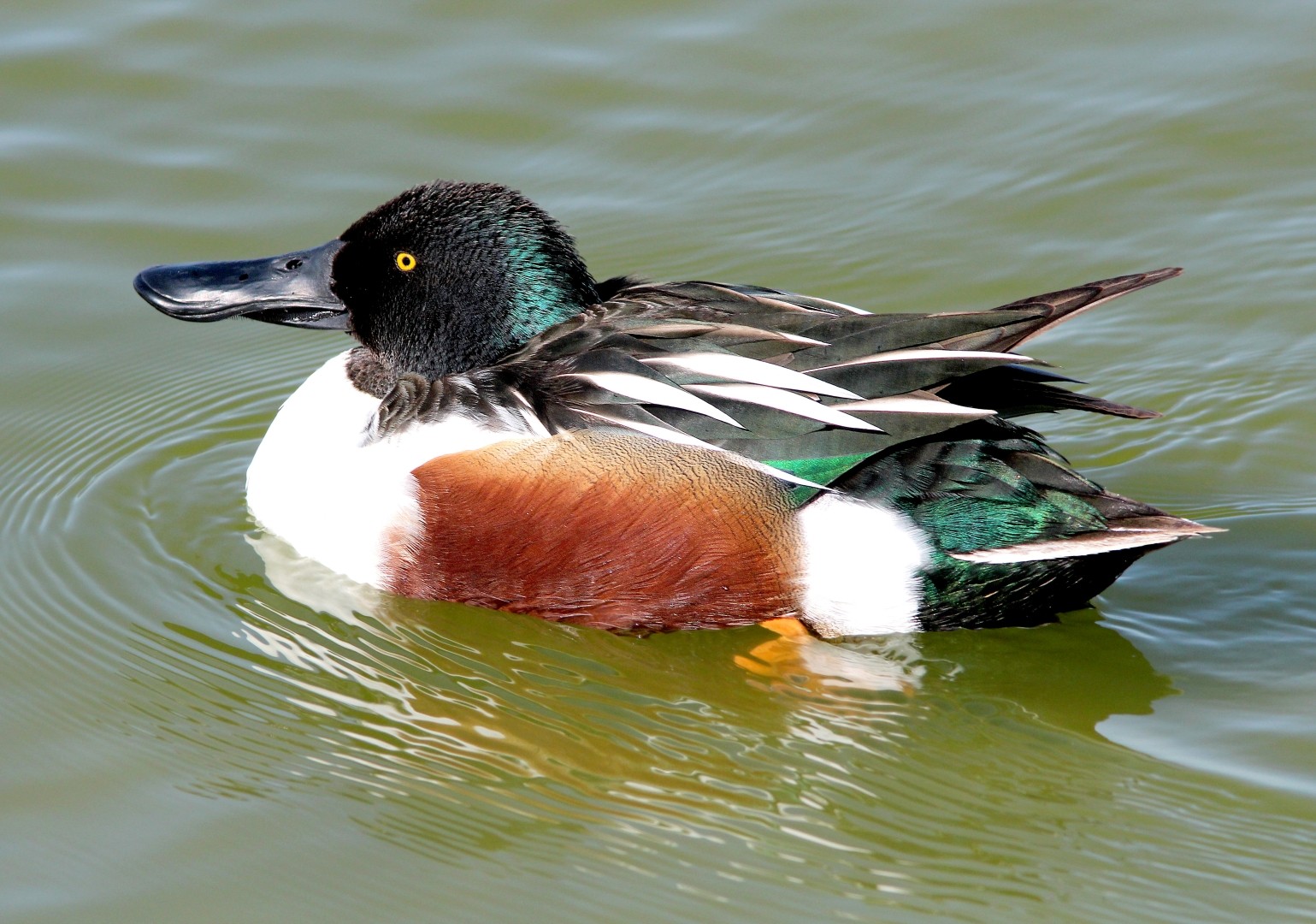Northern Shoveler
A species of Anas Scientific name : Spatula clypeata Genus : Anas
Northern Shoveler, A species of Anas
Botanical name: Spatula clypeata
Genus: Anas
Content
Description General Info
Description
The northern Shoveler is primarily seen in freshwater habitats, where it forages for feed with its large bill. The spoon-shaped bill is often clearly visible on the duck, even when it is in flight. It’s not uncommon to see the duck in groups swimming in circles as it searches for food.
Size
41 - 81 cm
Life Expectancy
21 years
Nest Placement
Ground
Clutch Size
8 - 12 eggs
Incubation Period
1 brood
Number of Broods
22 - 25 days
Feeding Habits
Northern Shoveler consumes small crustaceans, aquatic invertebrates, and seeds, filtering them from the water using lamellae on their specialized bills.
Habitat
Northern Shoveler predominantly inhabit wetlands such as marshes and open waters with submerged vegetation. They favor shallow aquatic environments, from sea level to high-altitude lakes in temperate to subtropical regions. During breeding, they nest in marshy edges and neighboring grasslands. Adaptably, northern Shoveler also utilize man-made habitats like agricultural ponds and wastewater facilities.
Nest Behavior
The female northern Shoveler is solely responsible for the nest-building, which includes scraping the ground using her body, feet, and bill. She lays eggs and provides parental care discretely within dense vegetation to protect from predators.
Nest Characteristics
Northern Shoveler typically constructs its nest as a small depression on the ground, about 8 inches wide, often within 150 feet of water. The surrounding vegetation partially conceals the nest, which is lined with the bird's downy feathers, adding insulation and camouflage.
Dite type
Omnivorous
General Info
Feeding Habits
Bird food type
Sounds
Call
Recording location: United States
Call
Recording location: United States
Call
Recording location: United States
Behavior
Northern Shoveler exhibit a distinctive filter-feeding behavior, sifting through water with their elongated bills to catch crustaceans. These birds typically swim in wetlands, sometimes forming circles in larger groups to agitate food sources. When not in the water, they rest or walk along margins yet rarely forage on land. Northern Shoveler show sociability, often found in mixed-species flocks, though they exhibit territoriality during breeding. Males perform elaborate courtship displays and may form monogamous pairs for the season. Post-breeding, males congregate and molt flight feathers, rendering them briefly flightless and reclusive at this vulnerable time.
